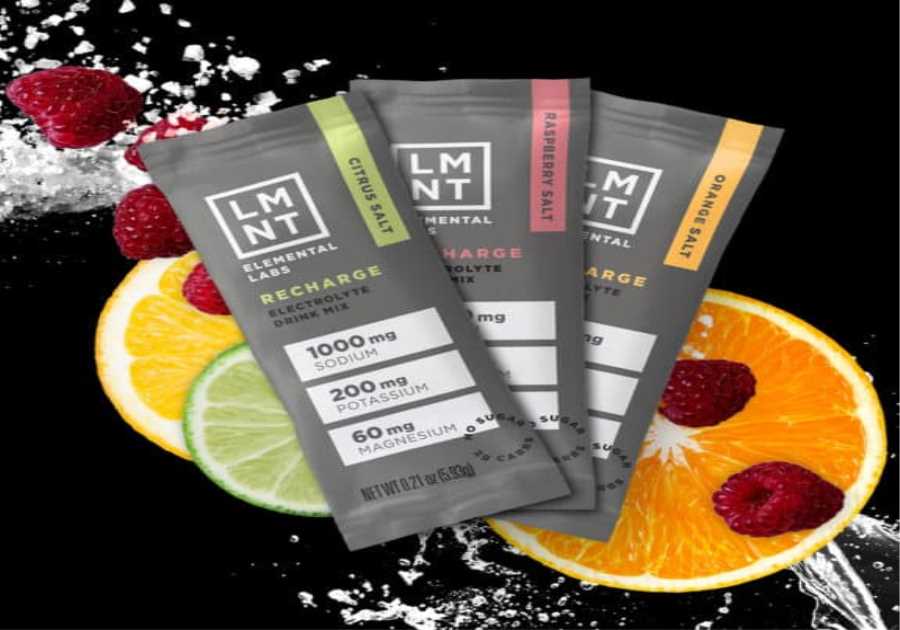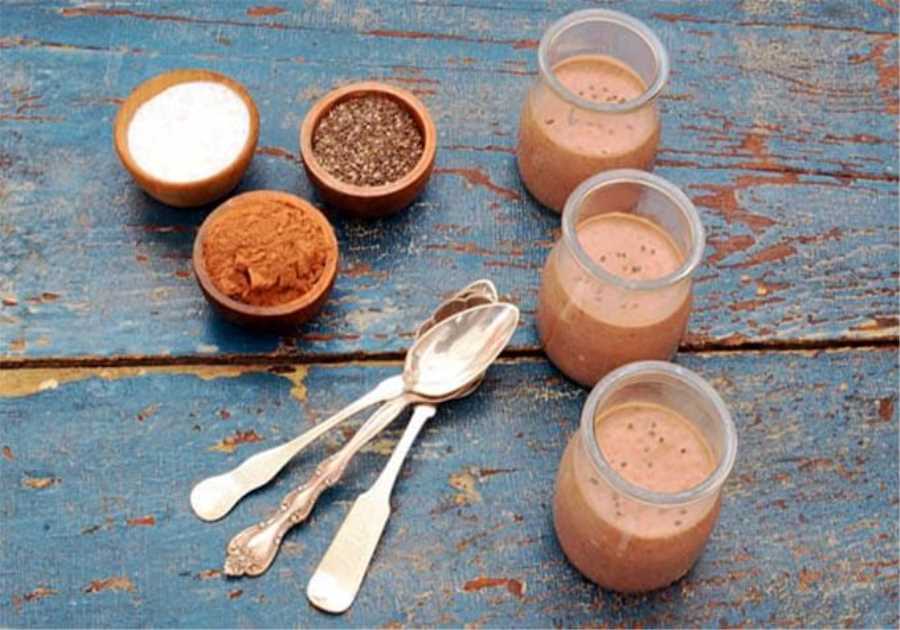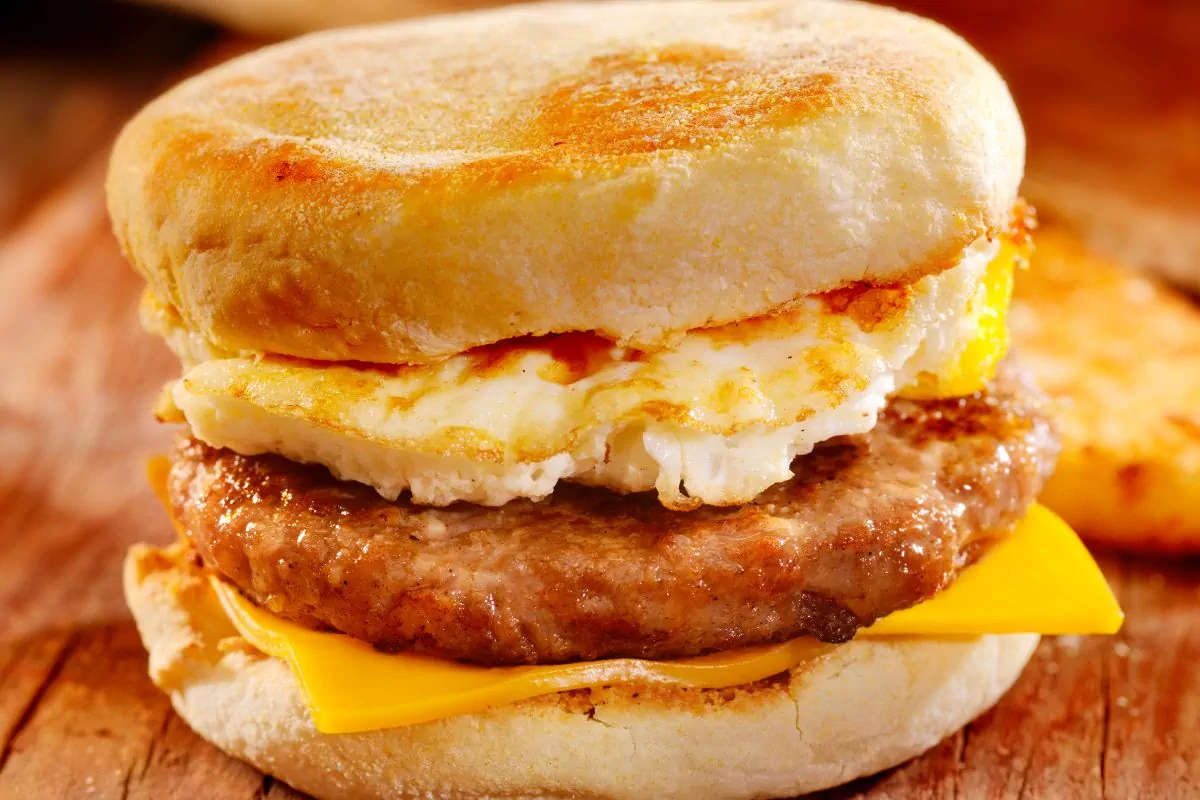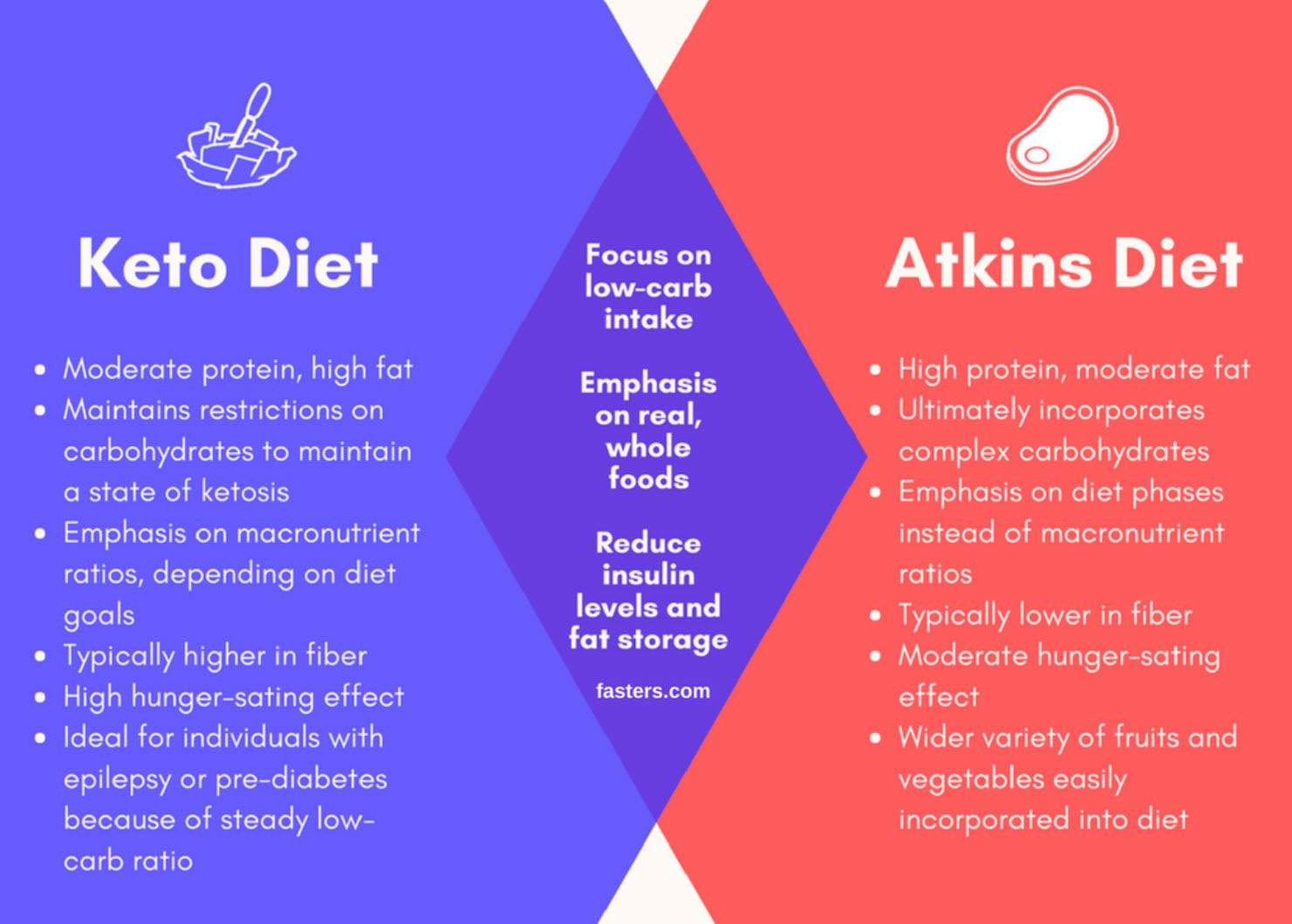
All You Need to Know about Keto Diet Versus Atkins Diet
The ketogenic diet and the Atkins diet are two popular dietary approaches used to promote weight loss. Both diets have been studied extensively, with various research identifying potential health benefits and some drawbacks associated with each approach. This article will provide an overview of both diets and compare their differences in nutrient composition, health implications, and other factors related to successful implementation for long-term success.
Both the ketogenic diet and the Atkins diet reduce carbohydrate intake considerably compared to traditional eating patterns, however there is a significant difference between them in terms of which nutrients they emphasize. The ketogenic diet restricts carbohydrates to very low levels usually less than 50 grams per day while emphasizing high fat intake from sources like avocado oil, butter, olive oil, nuts, seeds and fatty fish. On the other hand, the Atkins diet limits carbohydrates significantly but does not restrict total fats or saturated fats specifically; instead it focuses on higher protein intake from lean meats such as poultry and seafood and plant-based proteins like tofu and tempeh.
In addition to macronutrient composition, certain important micronutrients may be lacking in either diet depending on how strictly one follows it; this includes vitamins A, C & E, and minerals like calcium & iron. Furthermore, due to its lack of variety, any restriction can lead to decreased adherence over time making sustainability difficult. Thus while many individuals successfully lose weight following these dietary plans individuals must understand what each entails before committing to either lifestyle change so they can make informed decisions regarding their nutrition plan.
Overview Of Low Carb Diets
Low carb diets are becoming increasingly popular due to their effectiveness in aiding weight loss. Generally, low carb diets limit carbohydrate intake and promote a high fat diet as an alternative energy source. The modified Atkins diet is the most widely known form of this type of eating pattern, characterized by its carbohydrate restriction to less than 20 grams per day. Another common approach is the cyclical ketogenic diet which involves periods of higher carbohydrate consumption interspersed with lower carbohydrate days. A more targeted version of this plan is the targeted ketogenic diet which allows for increased carbs around workouts or other strenuous physical activity. Low Carb High Fat (LCHF) and Low Carb Paleo Diets are two additional variations focusing on reducing carbs while increasing healthy fats from plant-based sources such as nuts, avocados and olives. Each has unique benefits based on individual needs and preferences. These approaches provide a wide range of dietary options for those interested in adopting a low carb lifestyle. Regarding potential health implications, studies have suggested positive outcomes when following these plans including improved body composition, enhanced cardiovascular health markers and decreased risk factors associated with diabetes. Moving forward it would be beneficial to explore some key benefits related to consuming a high fat diet .
Benefits Of High Fat Diets
Like a symphony, high fat diets have been carefully composed to promote health and well-being. These diets include the Keto and Atkins diets, which contain large amounts of fats, moderate protein intake, and very low carbohydrates. The benefits are numerous:
- Fatty acids found in Ketogenic Diets for epilepsy can help protect against seizures
- Saturated fats provide energy needed throughout the day
- Monounsaturated fats reduce inflammation and improve cholesterol levels
- Polyunsaturated fats support normal blood clotting
- Omega 3 fatty acids aid brain development These advantages demonstrate that consuming higher amounts of healthy fats is beneficial to overall health when done correctly. Furthermore, these diets may also be successful for weight loss due to their satiating properties. With this in mind, it’s important to understand not all sources of fat are created equal – some should be consumed more than others. Transitioning into a discussion about weight loss strategies will explore how dietary changes can contribute to long-term success.
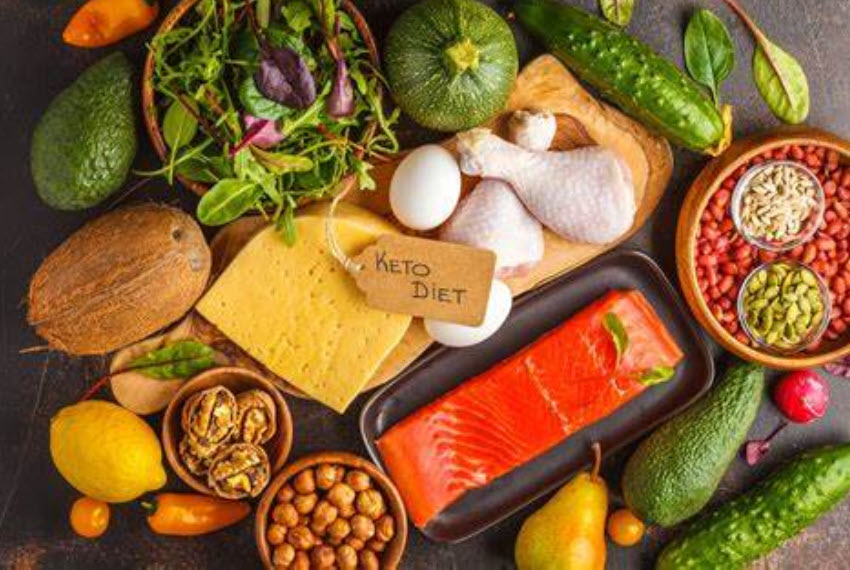
Weight Loss Strategies
The keto diet and the Atkins Diet are both low-carb, high-fat eating plans that aim to induce weight loss by limiting carbohydrate intake. The primary difference between these two diets is the amount of protein consumed during each plan; the Atkins Diet recommends a higher daily protein level than the keto diet. Both diets rely on utilizing fat for energy instead of carbohydrates through a process known as ketosis, which produces ketone bodies in the liver. This metabolic state can benefit weight loss when coupled with an increased focus on nutrient-dense foods and regular physical activity.
Weight loss plateaus can occur while following either type of diet. However, the key to continued progress is consuming adequate amounts of healthy fats, proteins, and micronutrients from vegetables. Fat adaptation also occurs over time and allows individuals to increase their carb tolerance without sacrificing muscle preservation or increasing body fat levels. Incorporating intermittent fasting into the meal plan may also help break up any stubborn plateaus that occur along the way. Low-carb snacks like nuts, seeds, or nut butter can be incorporated throughout the day if hunger arises without compromising total calorie goals.
When beginning a new dietary program, it is essential to focus on understanding what macronutrient breakdown best fits individual needs and having realistic expectations regarding timeline and results. Additionally, long-term sustainability should always be considered before embarking on any new dietary journey. Understanding how various macronutrients interact within your body is essential when deciding whether a ketogenic or Atkins approach will work best for you.
Understanding Ketosis
Ketogenic diets, such as the Atkins and Keto, have become popular over the past several years. They are low-carbohydrate, high-fat diets that promote rapid weight loss by inducing a state of ketosis in the body. Ketosis is a metabolic process in which fat is used as an energy source instead of carbohydrates or glucose. While there are many potential benefits to this type of diet, it can also pose certain risks if not followed properly. This section will explore the effects of keto flu, insulin sensitivity, and brain function on a ketogenic diet, and what foods should be included for optimal health.
The first issue with transitioning into a ketogenic diet is "keto flu." This occurs when the body begins producing large amounts of ketones during the transition period from burning carbs to burning fats for energy. Symptoms may include fatigue, nausea, dizziness, headaches, and cravings for sugar or carbohydrates. It usually subsides within two weeks but can be managed through proper hydration and electrolyte supplementation.
Insulin sensitivity is another important consideration when following a ketogenic diet. High levels of dietary fat can lead to decreased responsiveness to insulin which could leave people at risk for diabetes if they do not monitor their blood sugar levels closely while on the diet. If individuals experience any symptoms of insulin resistance, they should speak with their healthcare provider about appropriate monitoring strategies before continuing with the diet plan.
Regarding brain function on a ketogenic diet, research has suggested that long-term use may improve cognitive performance in some areas, such as memory recall and attention span due to the increased availability of fatty acids in the bloodstream, which help fuel neurons in the brain. However, more studies need to be conducted before any definitive conclusions can be made regarding its beneficial impacts on mental health outcomes.
Lastly, those who follow a strictly low-carbohydrate approach must ensure they get enough vitamins and minerals from other sources, including leafy greens and low-carb vegetables like broccoli, cauliflower, Brussels sprouts, etc. Additionally, artificial sweeteners such as stevia monk fruit or sucralose can provide sweetness without increasing carbohydrate intake significantly so these may also be helpful additions to meals, snacks, desserts, etc. As always, consult your healthcare provider before drastically changing your eating habits. It is worth exploring the glycemic index further to better understand how different foods affect our bodies.
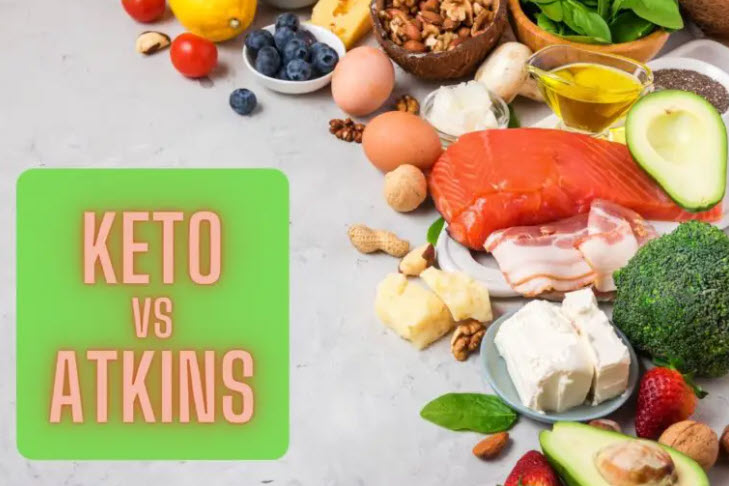
Exploring The Glycemic Index
If you have ever found yourself in a supermarket aisle questioning why certain foods are good for your diet and others not so much, then it's time to explore the concept of the glycemic index. Satirically put, our bodies are like machines that need proper fuel to perform at their best - but which type of 'fuel' should we choose? The answer lies in understanding how carbohydrates can be manipulated through carbohydrate cycling, glycemic index, glycemic load, insulinogenic index, and metabolic flexibility.
The glycemic index (GI) indicates how quickly a food will raise blood sugar levels upon consumption. GI values range from 0-100; lower values indicate slower digestion and absorption rate while higher ones represent faster digestion and absorption rate. For example, whole-grain bread has a GI value of around 50, whereas white bread has a GI value of 70 or higher. A low-glycemic diet typically includes foods with a GI below 55 as they tend to make us feel full longer, resulting in better control over cravings.
Glycemic loads (GL), on the other hand, measure both the quantity and quality of carbohydrates consumed per serving size rather than solely the speed of digestion. They take into account fiber content which helps slow digestion since fiber tends to bind easily with water molecules forming thicker substances inside the stomach, requiring more effort to break it down. Hence GL gives us a better idea about the number of carbs needed depending on an individual’s goals, such as losing weight or maintaining body composition.
The insulinogenic index measures the ratio between glucose level after consuming a meal versus the amount of insulin produced by the pancreas afterward to regulate those levels back to normal within several hours post-consumption. Low-insulinogenic foods help reduce risk factors associated with diabetes development by preventing huge spikes in glucose followed by sharp drops later on due to lack of digestive enzymes able breakdown these types of meals efficiently, leading eventually to unbearable hunger pangs a few hours later causing a person to reach again for a snack food thus setting vicious circle all over again.
Metabolic flexibility is one’s ability to switch energy sources very fast when required minimizing any disruption activities done throughout the day, allowing us to concentrate on more important things in life without being distracted and constantly search the next source of calories to keep going whatever task currently doing.
Identifying Insulin Resistance
Identifying insulin resistance can be done through various methods, including fasting insulin levels and blood glucose tests. It is important for a registered dietitian/nutritionist to understand the differences between keto diets and Atkins when determining if someone has an increased risk of developing metabolic syndrome or other health issues related to cardiovascular health.
The following table compares the two diets in terms of their macronutrient breakdowns as well as fiber intake:
| Keto Diet | Atkins Diet | |
|---|---|---|
| Protein (g) | Moderate | High |
| Fat (g) | High | Moderate |
| Carbohydrates (g) | Low | Low |
| Fiber Intake(g) | Low | Low |
Both diets are low-carbohydrate approaches that limit carbohydrate intake, however the main difference lies in their protein content. The Keto diet comprises moderate amounts of protein while the Atkins diet emphasizes high amounts of total protein consumption. Additionally, both have very limited fiber intakes, which may lead to constipation and other gastrointestinal issues.
It is also important to note that these diets must be followed strictly to reduce insulin resistance effectively. If not adhered to properly, they could worsen one's condition due to inadequate nutrients and calories consumed throughout the day. Furthermore, it’s essential for those on either of these diets to monitor their fasting glucose and insulin levels regularly so any potential risks can be identified early on before more serious complications arise from prolonged exposure to elevated glucose or insulin concentrations in the bloodstream. Transitioning into metabolic syndrome and cardiovascular health, it is important to consider how dietary habits influence long-term health outcomes associated with developing conditions such as hypertension or type 2 diabetes.
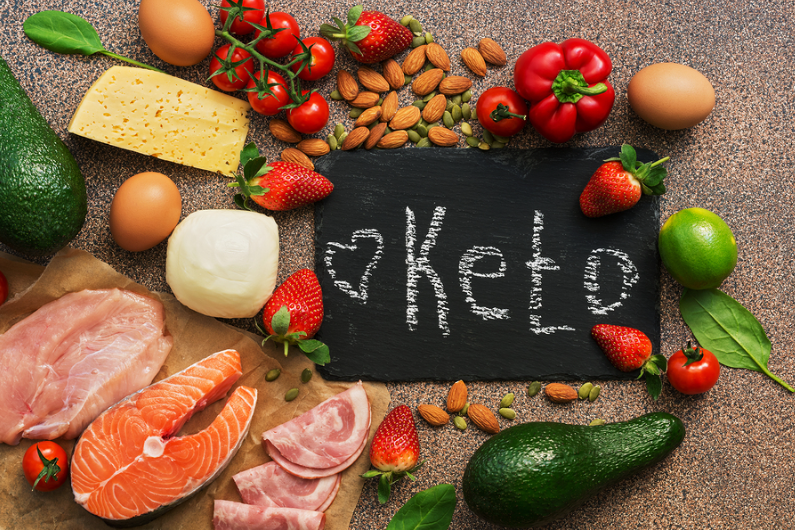
Metabolic Syndrome And Cardiovascular Health
As discussed in the previous section, insulin resistance is crucial for identifying and managing metabolic syndrome. This section will further explore how two popular diets—keto and the Atkins—can influence our cardiovascular health by examining their effects on cholesterol levels, thyroid function, hormonal balance, glycemic control, etc.
The Keto Diet emphasizes high-fat intake while drastically reducing carbohydrates to induce a state of ketosis. A key benefit of this approach is that it can reduce triglycerides and LDL (bad) cholesterol levels which helps with overall heart health. Moreover, since the body has fewer energy sources from glucose when following this diet, there may be improved regulation of hormones such as IGF-1 and cortisol. Alongside these benefits are potential risks due to its restrictions on certain nutrients like fiber or vitamins found in plant foods — if not supplemented properly, they could lead to nutrient deficiencies over time.
In comparison, the Atkins Diet also follows a low-carbohydrate strategy but allows for more flexibility regarding macronutrient ratios than the Keto Diet does; meaning one’s daily caloric distribution between proteins, fats, and carbs can vary depending on individual needs. Additionally, compared to other high-fat diets, the Atkins Diet promotes moderate protein consumption rather than extremely large amounts as seen in some extreme versions of the ketogenic diet. Though higher protein intakes generally increase HDL (good) cholesterol levels which could help improve heart health long term, studies suggest that too much protein might adversely affect kidney function so moderation should always be considered here.
Considering both diet strategies together reveals that following either one can promote better glycemic control given the lower carbohydrate content which leads to reduced blood sugar swings throughout the day – an essential component for those seeking optimal metabolism functioning and general wellness management. With careful consideration towards balancing adequate calorie intake along with appropriate micronutrient supplementation based on individual goals though – especially important when considering any type of ‘high fat’ diet - both approaches offer potential advantages when it comes to improving lipid profiles and maintaining healthy cholesterol levels alongside normal thyroid function and balanced hormone production necessary for supporting good cardiometabolic health outcomes.. Moving forward then into diabetes management with low-carb diets becomes an ideal next step toward understanding how else these dietary strategies can support even greater clinical improvements amongst individuals struggling with chronic disease states over time
Diabetes Management With Low Carb Diets
Low-carb diets, specifically the keto and Atkins diets, have become popular for their potential to facilitate weight loss. Individuals following a low-carbohydrate diet may also benefit from improved diabetes management. Intermittent fasting is often included in these types of dietary plans as it has been found to reduce blood sugar levels and improve insulin sensitivity. Low-carbohydrate fruits such as berries are recommended when on a low-carb diet since they contain antioxidants that can help manage inflammation associated with diabetes. Additionally, bread alternatives like cauliflower pizza crust or lettuce wraps can provide an alternative option to higher-carb options like regular wheat bread or traditional pizzas.
When managing type 2 diabetes through a low carbohydrate approach, total daily calorie intake should be monitored while focusing on nutrient-dense foods such as lean proteins, non-starchy vegetables, healthy fats, nuts, and seeds. Eating adequate protein helps regulate hunger hormones which aid in avoiding overeating due to cravings caused by high glycemic index carbohydrates. Research suggests that limiting carbs and increasing protein intake may help lower heart disease risk factors among individuals with type 2 diabetes.
Overall, understanding how to properly balance macronutrients within a low carbohydrate eating plan can assist those living with diabetes in reaching their health goals without sacrificing taste or variety within meals. Achieving this goal of nutritional ketosis requires education about what foods are allowed on a low-carb diet based on individual needs and preferences. With careful planning and consideration for the overall nutrient content of meals, people living with type 2 diabetes can successfully follow a low-carb lifestyle safely and sustainably over time. Transitioning into a subsequent section about 'reaching nutritional ketosis', it is important for one to understand the role of nutrition in achieving ketosis effectively yet safely.
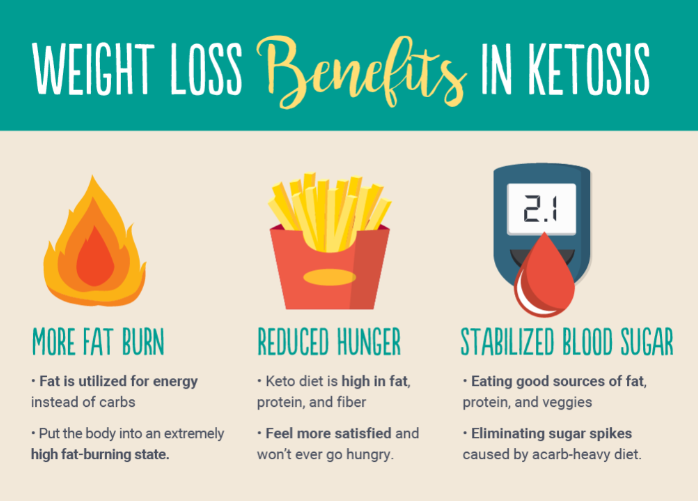
Reaching Nutritional Ketosis
Nutritional Ketosis is the state of being in which a person's body switches from using glucose as its primary energy source to ketones, produced by the liver. This switch occurs when an individual significantly reduces their carbohydrate intake while maintaining adequate levels of protein and fat. To reach nutritional ketosis, a person must adhere to a low-carb diet such as the Keto Diet or Atkins.
The plant-based version of the Keto Diet consists mainly of high-fat foods like nuts, seeds, avocados, olive oil, and coconut oil complemented with lower amounts of non-starchy vegetables and limited amounts of whole grains. Animal products can also be consumed but are not necessary for this diet. Consuming certain vitamins and minerals that may otherwise be deficient on such a restrictive diet plan may be beneficial. Adequate intake of electrolytes should also be considered due to potential changes in fluid balance caused by reducing carbohydrate consumption.
Long-term sustainability is an important factor to consider when determining whether or not low-carb diets are healthy and effective for long-term weight management success. Research suggests that there could be anti-inflammatory benefits associated with following a very low-carb diet; however, more studies need to be conducted before any concrete conclusions can be made about long-term efficacy and safety regarding these diets.
It is important for individuals who choose to pursue either the Keto Diet or Atkins approach to have access to appropriate resources such as nutrition counseling to ensure proper adherence and help prevent nutrient deficiencies that may arise from reduced carbohydrate intakes over extended periods. Transitioning into the next section exploring The Atkins Induction Phase requires examining what it entails and how it differs from other approaches when attempting to reach Nutritional Ketosis.
The Atkins Induction Phase
The Atkins Induction Phase is the initial stage of the diet plan and has been referred to as its most restrictive. However, one potential concern some may have with this phase is that it limits calorie intake too severely; fortunately, an advantage bar or two per day can help provide a feeling of fullness while still adhering to dietary restrictions.
Carb cycling—alternating days with high-carb refeeding—is generally not recommended in the Induction Phase because it could potentially hinder weight loss goals. Alcoholic beverages are also discouraged during this period as they contain carbohydrates which could slow progress.
Low-carb diets like Atkins often decrease triglyceride levels, compared to higher carbohydrate diets. Triglycerides are fats found in blood and ideally should be lower than 150 milligrams per deciliter (mg/dL). Low-carb diets reduce elevated triglyceride levels by reducing carbs in processed foods and added sugars.
Individuals on low-carb diets like Atkins must understand what constitutes net carbs to track their daily consumption accurately. To do this, certain calculations must be made...
Defining Net Carbs
The Atkins Induction phase is the starting point of a low-carb diet. It is designed to jump-start weight loss and ketosis when your body uses fat instead of carbohydrates as its primary fuel source. The Atkins Induction Phase limits carbohydrate intake to 20 grams per day or fewer. To maintain this level of carbohydrate restriction, individuals need to understand how to calculate net carbs – the number of total carbohydrates absorbed by the body. Net carbs refer to all forms of digestible carbohydrates from starches, sugars, and dietary fibers minus indigestible carbohydrates such as sugar alcohols and dietary fiber in processed foods.
Low-carb diets can positively impact several health markers, including HDL cholesterol levels, LDL cholesterol levels, nonalcoholic fatty liver disease (NAFLD), gallbladder health, and hydration levels. While studies show that following a low-carbohydrate diet initially improves these conditions, research suggests that long-term adherence may be difficult due to potential nutrient deficiencies associated with carbohydrate restriction. It's essential for people who follow very low-carb diets like the Keto Diet to ensure they get adequate amounts of vitamins and minerals by consuming whole food sources rich in nutrients like fruits, vegetables, and healthy proteins while limiting added sugars and refined grains.
Achieving optimal macronutrient ratios is important to maintaining a successful low-carb lifestyle. Depending on individual goals and current nutritional status, adjusting protein intake for keto dieters may be necessary to maximize results without sacrificing overall health or well-being.

Adjusting Protein Intake For Keto Dieters
Keto dieters should adjust their protein intake to meet their daily nutritional needs. The protein required varies depending on the individual's age, gender, activity level, and health status. Low-carb diets can positively affect mental health as well as fertility, aging, and inflammation markers in the body. Protein is an important macronutrient that helps to build muscle mass and maintain healthy bones. It also plays a role in keeping blood pressure levels within normal range.
To determine how much protein is needed for optimal keto results, it is necessary to calculate the ketogenic ratio, which considers the calories from carbohydrates, proteins, and fats. This ratio should be tailored to each person’s needs based on age, weight, lifestyle, and overall goals. To obtain adequate amounts of protein without exceeding carbohydrate limits, choosing higher-quality sources such as eggs, poultry, or fish may be beneficial. For those who prefer vegetarian options, nuts and seeds provide good sources of plant-based proteins that can help meet dietary requirements while staying within ketone-producing parameters.
Individuals following a keto diet must adjust their protein intake to maximize the benefits of this eating style while minimizing potential risks associated with too little or too much consumption. An appropriate balance will result in increased energy levels, improved physical performance, and enhanced cognitive function due to better nutrient absorption rates in the body. With careful monitoring and adjustment when necessary, achieving desired outcomes while maintaining optimum nutrition levels through proper food selection and portion control is possible.
By understanding these principles, it becomes easier to create balanced meal plans yet still adhere to strict low-carb guidelines established by the keto diet protocol. Making sure enough protein is included ensures a steady supply of amino acids available for use throughout the day which has been shown to promote satiety – helping people feel fuller longer between meals resulting in fewer cravings for unhealthy snacks or comfort foods rich in empty calories but lacking vital nutrients for long term wellness.
Calculating The Ketogenic Ratio
The ketogenic ratio is an important factor for those following a low-carb diet. It measures the macronutrient breakdown of fat, protein, and carbohydrates in one's daily intake. The traditional keto diet typically consists of 75-75% fat, 20-25% protein, and 5-10% carbohydrate while the Atkins diet may range from 60-70% fat, 30-40 %protein, and 5-10% carbs. Depending on individual goals and health concerns, different ratios will be more suitable than others. For instance, if someone has cancer or autoimmune diseases, they may reduce their protein content even further due to the potential inflammatory effects of excess proteins on these conditions. Additionally, foods such as dairy products are not recommended on a strict ketogenic diet due to their high lactose content; however, many people who follow a vegetarian version of the keto diet successfully incorporate them into their routine.
Calculating your exact macronutrient needs can help you get the most out of your dietary regimen by providing adequate energy sources without overloading any particular food group. To determine your ideal macro balance for weight loss or other specific health benefits, consult a registered dietitian or nutritionist who can assess your overall medical history and suggest personalized adjustments if necessary. By understanding how much of each macronutrient we need based on our individual body type, we can create balanced meal plans that provide optimal fuel while allowing room for enjoyment within our diets.
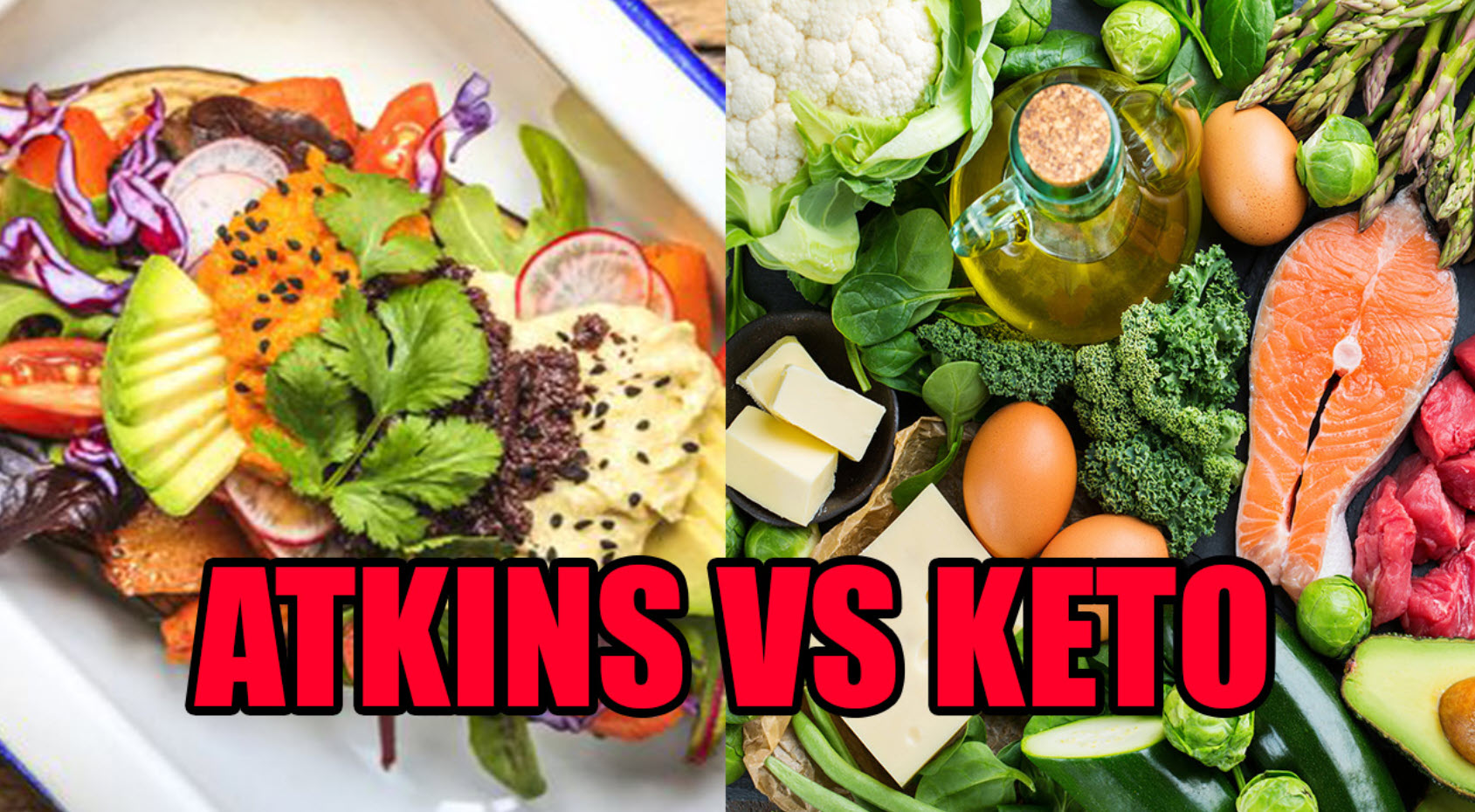
Comparing Atkins To Traditional Keto Diets
Comparing Atkins to traditional Keto diets requires an understanding of the differences between them. Traditional Keto diets consist of high fat, moderate protein, and very low carbohydrate intake while Atkins is a higher protein version, with more carbohydrates allowed in early stages. The focus on both diets however remains on reducing overall dietary carbohydrates for weight loss and other health benefits.
When comparing these two popular low-carbohydrate eating patterns, it is important to consider macronutrient content and food choices. Traditional Keto eliminates most grains and starches but allows for some nutrient-dense whole foods such as cruciferous vegetables, nuts, seeds, and fermented dairy products. In contrast, Atkins focuses heavily on processed meats like bacon and sausage and some starchy vegetable options like squash. Additionally, this diet plan has limited options for low-carb pasta alternatives, unlike the traditional keto where zucchini noodles or shirataki noodles may be included.
It has been suggested that specific components of macronutrients can have different effects on our gut microbiome, which could influence overall health outcomes long term. For example, recent research suggests that proteins found in animal sources may promote inflammation and epigenetic changes related to disease development. In contrast, plant-based proteins reduce risk factors associated with chronic diseases compared to animal sources due to their unique combination of fibers and micronutrients.[1] Therefore when considering either the Ketogenic or Atkins approach, one should strive for a balance between healthy fats from things like olive oil, coconut oil, and nuts/seeds; quality proteins from lean meats or fish paired with legumes; and plenty of non-starchy vegetables like broccoli, cauliflower spinach, etc.
In addition to macronutrient composition, it’s also important to monitor energy balance when attempting any restrictive eating pattern for prolonged periods of time as caloric deficits may lead to nutritional deficiencies over time if not monitored properly. With the Ketogenic Diet and Atkins Diet being so stringent in total daily carbohydrate intake, it would be wise to discuss potential risks with a Registered Dietitian Nutritionist before starting either program, especially if looking at following either diet long term. Transitioning into the subsequent section: While many people report success adhering to these eating programs, potential long-term health risks should also be considered before embarking on such a journey.
[1] Journal Reference: Vélez‐Cruz et al., 2020; Impact of a ketogenic diet on health-related quality of life, sleep, mood states, and fasting glucose in adults with obesity: A randomized controlled trial.
Potential Long-Term Health Risks Of Low-Carb Diets
It is important to consider the potential long-term health risks of low-carb diets, such as a keto or Atkins. Although these diets may be efficient in achieving weight loss results in a short period, they can also lead to serious health complications if not monitored properly. To better understand the effects of these diets on physical and mental well-being, let's take an in-depth look at some key topics below.
Epigenetics: Studies have shown that certain nutrients in high-carbohydrate foods affect epigenetic expression. Epigenetics refers to how our environment affects gene expression and can ultimately determine how we respond to disease. Therefore, when carbohydrates are restricted for extended periods, it could lead to changes in genetic markers, which could result in chronic illnesses like autoimmune diseases and cancer.
Low-Carb Diets & Athletic Performance: It has been suggested that performance levels decline with athletes who follow strict low-carbohydrate diets due to a lack of energy from carbohydrates for fuel during intense exercises. Additionally, without adequate glycogen stores (the stored form of glucose), muscle fatigue sets in much quicker, making it difficult for athletes to maintain peak performance levels throughout their training sessions.
Mental Wellness: Low-carb diets restrict complex carbs, which contain essential vitamins, minerals, and antioxidants necessary for proper brain functioning. Without sufficient micronutrients, mental clarity may diminish along with mood swings and anxiety levels increasing significantly, leaving individuals more vulnerable to depression over time.
Overall, while following a keto or Atkins diet might seem beneficial initially because of its ability to help achieve rapid weight loss goals; one must be mindful of their overall well-being by monitoring macronutrient intakes carefully over the long term so as not to cause any damage or harm their bodies’ natural homeostasis state.
Frequently Asked Questions
What Should I Do If I Experience Keto Flu Symptoms?
Keto flu is a set of symptoms that can arise when following the ketogenic diet. Symptoms may include headache, fatigue, bad breath, nausea, and constipation or diarrhea. It is important to note that these symptoms are not experienced by all individuals who follow this type of eating plan.
The best way to manage keto flu symptoms is to increase fluid intake and rest adequately. Additionally, consuming more electrolytes such as sodium, potassium, and magnesium should help combat any dehydration you might experience on a diet. Eating nutrient-dense foods like nuts and seeds can also relieve some of the unpleasant side effects of beginning a low-carb lifestyle. Furthermore, supplementing with MCT oil is beneficial for reducing hunger pangs and improving energy levels during the transition period into full ketosis.
It's essential to recognize that every individual responds differently to dietary changes; therefore, it’s important to listen to your body and adjust if needed. Before starting any new nutrition regimen, please speak with a registered dietitian or another qualified health professional about your specific needs so they can assist in creating an appropriate meal plan tailored specifically for you.
In addition, having support throughout this process can make a big difference in overall success; whether through friends/family or online resources like forums and social media networks, taking advantage of these outlets may prove helpful in navigating through challenges encountered while adapting to a new way of eating.
Is The Keto Diet Safe For People With High Cholesterol?
The ketogenic diet has become increasingly popular in recent years. This type of diet emphasizes high amounts of fat, moderate protein intake and low carbohydrate consumption. While the keto diet can benefit weight loss, it is important to consider its safety for those with pre-existing medical conditions such as high cholesterol.
It should be noted that a person’s overall dietary pattern is more important than simply focusing on one particular macronutrient like fat or carbohydrates when considering cholesterol levels. In regards to the keto diet specifically, research suggests this type of eating plan may help improve lipid profiles due to an increase in monounsaturated fats from sources like olive oil and avocados. However, it is also essential to consider potential side effects associated with any drastic changes in eating habits, including fatigue, constipation and bad breath.
For people who are looking to follow the keto diet but have high cholesterol, it is recommended they seek professional guidance before beginning the program. Additionally, regular monitoring of blood lipids during implementation may be necessary to assess how well the individual responds to this eating style. It may also benefit individuals with elevated cholesterol levels to opt for polyunsaturated fatty acids instead of saturated fats while following a ketogenic approach.
Overall there is some evidence suggesting the keto diet could potentially improve certain health markers related to cardiovascular disease risk factors like LDL-C (low density lipoprotein) and triglycerides; however these results remain inconclusive at best. Therefore it is essential for anyone interested in trying out this way of eating considers their own unique needs and consults with a qualified healthcare practitioner before making any major dietary adjustments.
Is It Possible To Follow The Keto Diet While Still Eating Some Carbs?
The ketogenic diet, popularly known as the 'keto diet', is an increasingly studied and discussed way of eating. It involves drastically reducing carbohydrates to induce a metabolic state known as ketosis, where the body produces molecules called ketone bodies which it can use for energy instead of glucose. But with its strict rules about what constitutes acceptable food intake, many people wonder whether following this diet while still consuming some carbs is possible or not?
Like a mountain climber scaling a steep incline using various techniques to reach his peak objective, individuals who choose to follow the keto diet have several options for carving out their own personalized approach that works best for them. To get a better understanding of these possibilities, let's look at four approaches one might take:
-
Gradually reduce carbs: This method entails gradually cutting back on carbohydrate intake until you reach your desired level. This may be especially helpful for those looking for more flexibility within the diet's parameters and could help limit any negative side effects that may come from abruptly changing dietary habits.
-
Cycle carb intake: With this approach, someone would alternate between high days (up to 50 grams) and low days (20g or less). The idea here is to mimic periods of higher carb consumption followed by lower carb consumption while maintaining overall net carb intake over time.
-
Consume only healthy sources of carbohydrates: Many people find success limiting their carb intake but allowing themselves access to healthier versions such as sweet potatoes, quinoa, oats and fruits rather than processed foods like white breads or pastas. These types of complex carbs are digested slower than simple sugars so they provide sustained energy levels throughout the day without spiking blood sugar levels.
-
Increase fat content while keeping carbs low: Taking advantage of healthy fats found in nuts, avocados and olive oil can also act as a counterbalance against too much carbohydrate restriction since increasing fat content helps keep hunger pangs away longer compared to just relying on protein alone - making sticking with the plan easier for most people over time.
As a Registered Dietitian/Nutritionist I recommend closely monitoring how your body responds no matter which approach you decide upon; pay attention to changes in weight loss progress along with other factors such as sleep quality and mental clarity before settling into a particular pattern that works well for you long term. By taking steps towards finding balance between appropriate carbohydrate amounts coupled with adequate amounts of fats and proteins, it is indeed possible to successfully adhere to a modified version of the keto diet while still meeting individual health goals.
How Long Should I Stay On The Keto Diet To See Results?
Sticking to a diet plan can be difficult, but it's important for long term health. The keto diet is a popular eating plan that has recently gained traction as an effective weight loss tool. This article will answer the question of how long should someone stay on the keto diet to see results?
The length of time necessary to achieve desired results varies from person to person and depends largely upon individual goals. However, following general guidelines may help provide some guidance:
- Start slowly - Begin by cutting out all processed foods and simple carbohydrates like white bread, pasta, and rice. Gradually switch over to more healthy alternatives such as whole grains and vegetables.
- Keep track - Track your daily food intake using a calorie counter or diary. Make sure you are getting enough protein, fiber, vitamins, minerals and other essential nutrients each day.
- Monitor progress - Regularly weigh yourself at home or with a nutritionist/dietitian to monitor any changes in body composition. Additionally, consider tracking blood sugar levels which can indicate improvements in metabolic health when adopting a low-carb lifestyle.
For those looking to lose weight quickly on the keto diet, it is recommended that they remain on a diet for at least two weeks before evaluating their progress. During this period of time individuals should focus on reducing calories while increasing nutrient-dense foods such as non-starchy vegetables and lean proteins sources like chicken breast or fish. After two weeks, assess if further dietary adjustments need to be made to reach the desired outcome(s). It’s also helpful to look into mindful eating practices during this time frame; focusing on portion sizes rather than eliminating certain foods can make staying on track easier.
It is important not just for physical health but mental health too that people enjoy what they eat – therefore tailoring meals towards personal tastes is encouraged so that sticking to the keto diet becomes something sustainable and enjoyable instead of feeling restrictive or uncomfortable with new eating habits being adopted.. Furthermore, enlisting professional help from registered professionals such as nutritionists or dieticians may prove beneficial in helping identify potential pitfalls along the journey towards achieving successful outcomes with regards to the keto diet regime for example, developing menus plans tailored specifically for individual needs alongside providing advice regarding nutritional supplements where needed.
In summary then when considering embarking upon a ketogenic style eating plan then, generally speaking, there should be no rush into making immediate drastic dietary changes overnight; instead taking small steps initially could end up having big rewards down the line in terms of both physical AND mental wellbeing, especially once realistic expectations have been set plus having access to suitable support network whether that comes through friend family member trained professional, etc.
Are There Any Dietary Supplements I Should Take While On The Keto Diet?
When following a ketogenic diet, many wonder if dietary supplements are recommended. The use of supplemental nutrients while on this diet has become increasingly popular in recent years due to the potential benefits it may offer. As such, understanding the role of various nutritional supplements for those who choose to follow a keto lifestyle can be beneficial when determining an individualized plan that meets their unique needs and goals.
It is important to note that supplementing with certain vitamins or minerals should not replace eating a balanced and varied diet that follows the guidelines of a ketogenic nutrition plan. For example, one of the most commonly used supplements on the keto diet is exogenous Ketones, which come in powder and pill form. These are meant to provide your body with extra energy sources so that you can remain in ketosis without making extreme changes to your current meal plan. Additionally, some people find taking omega-3 fatty acids helpful as they aid in reducing inflammation associated with metabolic syndrome and other diseases related to obesity.
However, before starting any type of supplementation program it is important to consult with a healthcare professional or registered dietitian/nutritionist first as there are potential risks associated with overuse or misuse of these products. Some common side effects include nausea, vomiting, diarrhea, dizziness, headaches and even fatigue depending on the dosage. Furthermore, some supplements may interact negatively with medications prescribed by your doctor, so always check with them before adding anything new into your regimen.
Individuals must also take into account their specific health status and medical history when deciding whether or not to add any additional vitamins or minerals into their daily routine; for instance pregnant women should speak to their physician about what types of supplements would be safe for them during pregnancy as well as after delivery. Ultimately, every person's journey will look different based upon their personal preferences and needs, but consulting an expert can help ensure that you are meeting all nutrient requirements necessary for optimal health and wellbeing while still reaping all the benefits from following a low-carb lifestyle like increased weight loss and improved blood sugar control.
Conclusion
The keto and Atkins diets are two of the most popular diets today, but how do they compare? To make an informed decision about which one is right for you, it’s important to understand the similarities and differences between these two diets. Both are high-fat, low-carb eating plans focusing on whole foods while limiting processed carbs. But there are some key differences as well—the keto diet allows a small number of carbohydrates, while the Atkins Diet doesn’t restrict them.
When switching from a standard Western diet to either plan, many people experience "keto flu" symptoms such as fatigue or headaches due to carbohydrate withdrawals. To manage this transition period effectively, adding electrolytes like sodium and magnesium can help reduce symptoms.
Both diets have potential health benefits, including weight loss and improved cholesterol levels; however, individuals should speak with their healthcare provider before beginning any drastic dietary changes. Any nutrition plan should be tailored to fit individual needs, and when considering both diets, it’s important to remember that no single plan works for everyone. By understanding the pros and cons of each approach compared to your lifestyle habits and goals, you can determine which diet best suits your needs.
Statistics
- If you're restricting carbs between 20 and 25 g per day and not overdoing it on protein, you will likely experience ketosis in the first phase, says Armstrong. (everydayhealth.com)
- You'll cut your carbs down to about 5 percent of your daily intake — so, for instance,in a 2,000-calorie-a-day diet, only 100 of those calories should come from carbs. (everydayhealth.com)
- Carbohydrates have around 4 calories per gram, which means you would need to limit yourself to 25 grams of carbs per day, about the amount in ¾ cup of cookedwhite rice, according to the U.S. Department of Agriculture (USDA). (everydayhealth.com)
- Seventy-five percent of your remaining calories willcome from fat and 20 percent from protein. (everydayhealth.com)
- One meta-analysis found that about 53 percent of patients with intractable epilepsy (epilepsy that cannot be controlled by medicine) who followed the keto diet reduced the frequency of their seizures bymore than 50 percent. (everydayhealth.com)
- An article published in Diabetes & Metabolic Syndrome: Clinical Research & Reviews found that subjects who followed the keto diet for 10 weeks had significant changes in weight, body fat percentage, and body mass index (BMI). (everydayhealth.com)
- There's no cap on Atkins, while keto limits protein to about 20 percent of your daily calories. (everydayhealth.com)
- Past research found dropout rates for ketogenic diets to be as high as 84 percent. (everydayhealth.com)
- Most Americans get about 50% of their daily calories from carbs, which equates to about 250 g of carbs if you eat 2,000 calories per day (1Trusted (healthline.com)
- Following the keto diet typically involves consuming less than 5% of calories from carbs, 10–30% from protein, and 65–90% from fat (healthline.com)
Helpful Resources:
- Atkins 20®, The Original Low Carb Keto Diet Plan | Atkins
- Atkins 20, Phase 4: Maintaining A Healthy Weight
- Ketogenic diet for treatment of intractable epilepsy in adults: A meta‐analysis of observational studies - PMC
- Ketogenic Diets and Chronic Disease: Weighing the Benefits Against the Risks - PMC
- Induced and controlled dietary ketosis as a regulator of obesity and metabolic syndrome pathologies
- Atkins Diet - an overview | ScienceDirect Topics

